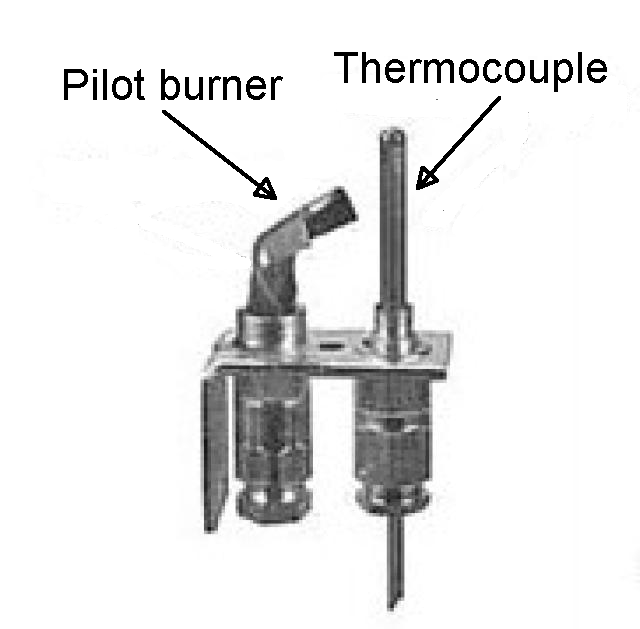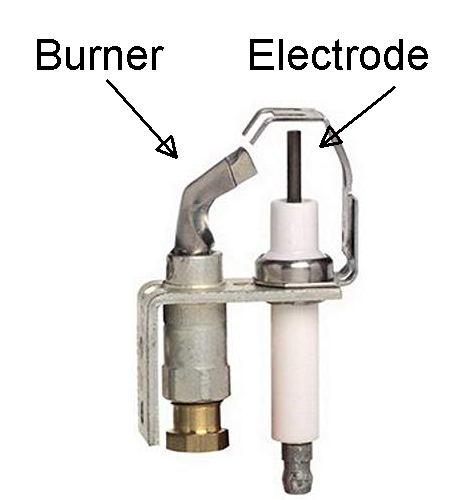| before |  |
| after |  |
The problem was that the pilot light in my boiler kept blowing out. This blog article describes how I managed to fix that problem. Continue reading “Retrofitting a boiler to spark ignition”

Bluesky: @oppedahl.com
| before |  |
| after |  |
The problem was that the pilot light in my boiler kept blowing out. This blog article describes how I managed to fix that problem. Continue reading “Retrofitting a boiler to spark ignition”
If you sometimes use the Patent Cooperation Treaty, and if you have not yet joined the PCT Listserv, please let this blog post remind you that you may wish to join that listserv. As a member of that listserv, you can be surrounded by the brightest PCT practitioners all around the world. Today in the PCT Listserv, alert member William Slate asked some very good questions, the answers to which remind us of Best Practices to be followed when pursuing entry into the US national phase from a PCT application. Mr. Slate asks:
The short answer is that so far as positioning in the USPTO Examiner’s examination queue is concerned, a well executed national phase entry or a well executed bypass continuation will end up in the same place in the queue. But as will be discussed, many US national phase entries are not “well executed”.
371 cases. A 371 case drops into the Examiner’s examination queue based upon the date upon which the applicant perfected entry into the US national phase. In the majority of cases this will be the “30-month date”, that is, the date that is 30 months after the priority date.
Of course quite often the queue position is the 30-month date because the filer hands in the papers for US national-phase entry on the last possible date. (Which might be due to procrastination on the part of the practitioner or on the part of the client.)
But if you review a lot of 371 file wrappers, you will find that very often the practitioner “leaves money on the table” regarding the position that is obtained in the Examiner’s examination queue. By this I mean that the requirements for perfection of US national-phase entry will have been satisfied chronologically prior to the 30-month date. The practitioner filed a document requesting US national-phase entry, and paid the needed fees, and provided translations into English (if needed), and handed in all of these things prior to the 30-month date. But then the practitioner failed to say the magic words. The practitioner failed to make “an express request for early national-phase entry”.
Such a failure means that the application could have entered the Examiner’s examination queue on the day of the (not filed) express request. Instead, the application sits on ice until the 30-month date, at which point for the first time it drops into the Examiner’s queue.
Such a failure “leaves money on the table” in at least two ways. First, we all have this old-fashioned notion that the reason we exist as practitioners is to help a client get a patent. And losing a few days (or a few weeks or months) in the examination queue means a probable delay in the eventual grant of a patent.
Second, the Patent Term Adjustment calculations, which are very complicated, sometimes count one of the time periods from the date upon which the application entered the Examiner’s queue. So a failure to file an Express Request will sometimes lead to a loss of PTA that would otherwise have been granted.
The Filing Receipt in a 371 case will list a “filing or 371” date, and it is this date on the official Filing Receipt that will determine the place in the examination queue.
Bypass continuations. In most patent offices around the world, there is only one path to patent protection from a PCT, namely entry into the national phase. But alert listserv member William Slate correctly reminds us that in the US, there are two available paths for patent protection from a PCT. One is the (very familiar) entry into the US national phase. The other is the (not so often employed) “bypass continuation”. There are many factors which might influence an applicant’s choice of one path or the other, factors the discussion of which can fill an entire hour of discussion during a PCT Seminar (see here and here and here) of a day or two’s duration. But Mr. Slate draws our attention to one particular factor, namely where does the application fall in the Examiner’s examination queue, depending upon the practitioner’s choice of filing path?
We have already discussed where a US national phase (371) case falls in an Examiner’s queue. The position in the queue is the 30-month date, unless the practitioner is savvy enough to file an Express Request (and to fulfill the other requirements such as fees and translations and the inventor’s oath or declaration). But what about the bypass continuation? What position does it earn in the Examiner’s queue?
The answer is, the position in the queue for a bypass continuation is the same as for an ordinary domestic US patent application that has no priority claim or domestic benefit claim. The simple “filing date” as shown on the Filing Receipt will determine the position of the bypass continuation in the Examiner’s examination queue.
Which then brings us to Mr. Slate’s sub-questions.
Does the IFD make a difference depending on whether we pick 371 or bypass? No, the IFD (international filing date) does not play any part in the position in the examination queue in the USPTO. Not for a 371 case, not for a bypass case.
Does the choice of RO make a difference depending on whether we pick 371 or bypass? No, nothing about this is tied in any way to the particular Receiving Office (“RO”) which the applicant selected. Picking RO/US rather than some other RO does not lead to an earlier position in the examination queue. Not for a 371 case, not for a bypass case.
Does it make a difference depending upon where the priority application was filed? No, nothing about this is tied in any way to whether the priority application was filed in the USPTO or at some other patent office. Arranging for the priority application to be a US provisional rather than a non-US patent application does not lead to an earlier place in the US examination queue. Not for a 371 case, not for a bypass case.
The applicant that is concerned about how quickly an application will get examined, then, will not be particularly slanted toward one path or the other (371 or bypass). But as mentioned above, there are many other factors (other than examination queue position) that might influence the savvy filer’s choice of one path or the other. Go to a PCT Seminar (see here and here and here) to hear about this for an hour or so.
Getting ahead in the queue? The applicant that is concerned about how quickly an application will get examined may wish to pay close attention to other initiatives that can make a big difference. In our office the initiative that we use most often is the Patent Prosecution Highway. The PCT applicant can arrange to receive a favorable Written Opinion from the International Searching Authority. Or failing that, the PCT applicant can file a Demand and winkle a favorable International Preliminary Report on Patentability (under Chapter II of the PCT) from the International Preliminary Examining Authority. Either of these accomplishments permits the PCT applicant to move to the very front of the line for examination in the USPTO, using the PPH.
Another initiative which some applicants pursue is Track I. There are many pros and cons as between Track I on the one hand and PPH on the other hand, which will be the subject of a later blog posting here.
To summarize, so far as positioning in the USPTO Examiner’s examination queue is concerned, a well executed national phase entry or a well executed bypass continuation will end up in the same place in the queue.
Again, hats off to alert listserv member William Slate for reminding us of these important Best Practice issues.
(Update: see our new speed test here.)
When I check into a hotel or log in at a public wifi location, I sometimes do a “speed test”. The goal of course is partly just to make sure that I have successfully logged in or have successfully entered an access code. And to test to see how fast the Internet connection is.
I am tickled to be able to report that we at OPLF have set up a speed test which everyone can use. The speed test, unfortunately, requires that your system has “Flash”. Most smart phones and tablets do not have Flash. So the speed test is generally available only for laptop and desktop computers.
Who would like to receive a free super spiffy OPLF digital multimeter? Maybe you already have an OPLF digital multimeter? This one is new and more spiffy. In addition to the features of our original digital multimeter, this device measures current and has an audible continuity indicator. (It can be set to beep when there is continuity.) This new device does auto-ranging; with our original multimeter you had to select the range.
So if you’d like to receive one of our super spiffy new OPLF digital multimeters, just be one of the first three people to post a comment in which you report the results of at least two speed tests — a speed test result using your favorite speed test that you have used in the past (a speed test hosted by someone other than OPLF) and a speed test result using our new speed test. It would be interesting to see how the results compare.
Last week I blogged that I was astonished (in a nice way) to learn that the Schwegman firm will be providing in-person continuing legal education free of charge in a few weeks in San Jose, California. Schwegman will actually be providing two days of free training — a first day about best practices for patent docketing, and a second day about the Patent Cooperation Treaty. The patent docketing class will be all day on February 22 and the PCT class will be all day on February 23.
Schwegman is not, however, the only firm doing such nice things. McDonnell Boehnen Hulbert & Berghoff LLP, perhaps better known as MBHB, has offered many free-of-charge continuing legal education webinars. I have just now signed up to attend their most recently announced webinar, which will take place on February 22. The title is Patent-Eligibility Update: Abstract Ideas in the Federal Circuit and USPTO. To learn more about the webinar, or to sign up, click here.
OPLF has offered some free CLE webinars in the past, and, inspired by Schwegman and MBHB, we will offer some free CLE webinars in the near future. If you want to be sure of hearing about the free CLE webinars when they get scheduled, be sure to subscribe to this blog.
Who would like to join me in complimenting Schwegman and MBHB in their public-spirited activities? Post a comment below, and share this blog article with someone whom you know at each of the two firms.
 With this blog posting I am launching a new article category “travel”. It’s prompted by a recent Wall Street Journal article that confirmed what I had been suspecting for quite some time. Yes, many modern hotel thermostats, the kind with a digital display, are rigged. Continue reading “Hotel thermostats”
With this blog posting I am launching a new article category “travel”. It’s prompted by a recent Wall Street Journal article that confirmed what I had been suspecting for quite some time. Yes, many modern hotel thermostats, the kind with a digital display, are rigged. Continue reading “Hotel thermostats”
(Note: I do not recommend Whatsapp any more. I now recommend Signal.)
Long-time readers of this listserv will recall my suggestion that the smart way to do messaging is not through cell service text messaging and is not through most of the available messaging apps. As I wrote in this blog article, in my view by far the best choice is Whatsapp. Whatsapp is encrypted from end to end. Whatsapp gets through any firewall, no matter where you are in the world, and nobody can eavesdrop on the messages. You can use it for messaging but you can also use it to send attachments, including large files, again safe against eavesdropping. No other messaging app or service is quite this safe against eavesdropping.

Just now I have added a Whatsapp plugin to this blog. If you are viewing this blog article on a smart phone or tablet, you should be able to see a Whatsapp button (like the icon at right) below this posting.
Here’s the fun part. The first three readers who successfully share this very article with me using the Whatsapp share button below (visible only if you are using a smart phone or tablet) will win a prize, namely a spiffy OPLF digital voltmeter.
To do this, you will need to install the Whatsapp app onto your smart phone or tablet (if you have not done so already) and then you will need to add me to your Whatsapp contacts list (if you have not done so already). Then you will need to view this blog article on your smart phone or tablet, and scroll down to the Whatsapp share button, and click on it.
 Will you be in Barcelona this May at the time of the annual meeting of the International Trademark Association? If so, maybe you would like to rub elbows with the savvy and alert people who belong to the E-Trademarks Listserv. Maybe you would like to attend the Seventh Annual E-Trademarks Listserv reception. To attend the reception you will need to have one of these spiffy ribbons (see at right) attached to your meeting badge. To receive one of these spiffy ribbons, just scan the QR code in the ribbon. Or you can click here.
Will you be in Barcelona this May at the time of the annual meeting of the International Trademark Association? If so, maybe you would like to rub elbows with the savvy and alert people who belong to the E-Trademarks Listserv. Maybe you would like to attend the Seventh Annual E-Trademarks Listserv reception. To attend the reception you will need to have one of these spiffy ribbons (see at right) attached to your meeting badge. To receive one of these spiffy ribbons, just scan the QR code in the ribbon. Or you can click here.
We at OPLF should have done it a long time ago … but finally today we have implemented SSL (“https”) for our main web site www.oppedahl.com. In addition we have configured the SSL on https://www.oppedahl.com so that it uses PFS (perfect forward secrecy). The domain name itself has for several years now been protected by DNSSEC.
One reason that a webmaster should implement SSL is that Google and the other search engines give a small boost in page ranking to a web site that supports SSL.
But the more important reason to implement SSL is simply to make web connections more secure. Among other things SSL eliminates eavesdropping on a web connection.
If you haven’t already done so, you should implement SSL (and PFS, and DNSSEC) on the web sites that you operate.
 The dates have been set for the 21st annual AIPLA PCT Seminar. The Seminar will take place in Arlington, Virginia on Monday and Tuesday, July 24 and 25, 2017.
The dates have been set for the 21st annual AIPLA PCT Seminar. The Seminar will take place in Arlington, Virginia on Monday and Tuesday, July 24 and 25, 2017.
Save the date for this seminar. There’s nothing quite like this seminar, which has representatives of patent offices as well as experienced private practitioners. Here are comments from two who attended:
“Each and every presenter was incredibly knowledgeable and provided us with invaluable information.”
“Excellent panel.”
Have you attended one of the twenty previous AIPLA PCT Seminars? Did you find it helpful? Please post a comment below.
There are quite a few upcoming opportunities to learn about the Patent Cooperation Treaty:
Continue reading “Opportunities to learn about the Patent Cooperation Treaty”